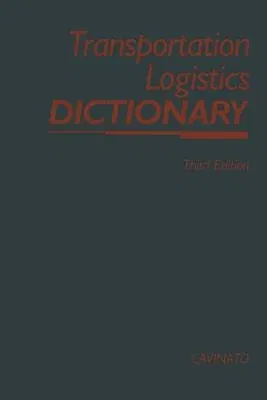This dictionary is testimony to the dynamic nature of the transportation
and logistics field. The field continues to grow and evolve into an
increasing myriad of orientations. This work stems back to the middle
1970s with the first edition by Wallace I. Little (1921 - 1977). The
second edition in 1982 contained over five hundred additions and nearly
sixty major alterations. This tJ: llrd edition contains over three
hundred additional entries as well as major ai erations to over fifty of
them. Transportation continues to change into a market driven industry.
The user side reflects market- and management-driven emphases that would
have been labeled as pure fiction just a decade ago. Some of these
changes are: - Deregulation - Purchasing evolving closer to logistics
and having greater roles in with traffic - Logistics having close
association with production, scheduling, and related areas - Computers
and electronic links becoming major parts of the traffic/
transportation/purchasing landscape - Greater international corporate
orientations - Need for logistics flexibility regarding pro-action in
the face of energy, interest cost, inflation, international competition,
and other major environmental forces - Increased roles of non-economic
regulations and policies In addition to the changes in the
transport-traffic management interface, the shipper side of the world
has extended to be linked with such titles and functions as materials,
distribution, warehousing, inventory, customer service, order entry,
planning, production scheduling, and in many cases purchasing. This
dictionary is a document that will continue to grow.


